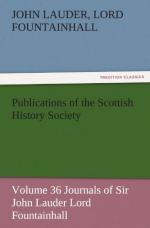2. In Scotland and England.[32]
[32] See Cochran Patrick’s
Records of the Coinage of Scotland
(1876);
Ruding’s Annals of the Coinage (1817);
and Handbook of
the
Coins of Great Britain and Ireland in the British
Museum, by
H.A.
Grueber (1899); Burns, Coinage of Scotland.
(1) Jacobus (2) Carolus. James VI. on his accession to the throne of England, with a view to the union of the kingdoms, issued a coinage for both countries, which was in this sense uniform that each Scottish coin was commensurable and interchangeable with an English coin. The ratio of the Scots to the English L s. d., which during centuries was always becoming lower, was finally fixed at 1 to 12. The English 20s. and Scots 12 l. pieces of equal value now issued were called the unite. The double crown or 10s. piece was the Scots 6 l. piece, the crown the Scots 3 l. piece, and so on.
The unite was so called from the leading idea of union, just as the double crown had the legend, Henricus Rosas Regna Jacobus. As Henry VII. united the Red and White Roses, James was to unite the two kingdoms. It seems probable that James intended the unite as a 20s. or pound piece to be the standard and pivot of the coinage of both countries, as the pound or sovereign has now become. This enlightened policy, though it had lasting effects, soon broke down in detail. In England the shilling proved too strong for the unite, and in Scotland the merk maintained its hold. To prevent the exportation of gold, the value of the unite of 154 grains[33] was raised to 22s. in 1612, though the king had himself proposed rather to lower the weight of silver. That caused confusion, ’on account of the unaptness for tale’ of the gold pieces at their enhanced value, and a lighter 20s. piece of 140 grains was issued in 1619 for England only, known as the laurel piece, from the wreath round the king’s head. In Scotland the original unite remained, and was sometimes called the 20 merk piece, to which value it roughly corresponded. It was repeated in the coinage of Charles I., the last sovereign who coined gold in Scotland prior to the Revolution. Thus it was the only Scottish 20s. sterling piece. Charles I.’s unite or double angel (20s. piece) for England was of the same lighter weight as the laurel. In 1661 the value of the gold coin was again heightened, the old unite to 23s. 6d., and the lighter English unite to 21s. 4d.
[33] The weights are given in round numbers.
The above information is necessary in order to identify the two gold coins which Lauder used. He generally calls the larger the Jacobus and the smaller the Carolus. At p. 80 the one is mentioned as ’the Scotes and English Jacobuses, which we call 14 pound peices,’ and the other as ’the new Jacobus, which we cal the 20 shiling sterling peice.’ At p. 154 he speaks of ‘10 Caroluses, or 20 shiling




